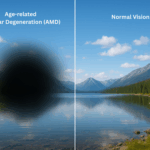Children are usually farsighted at birth and childhood because they have smaller eyes. As children get older, their eyeballs will lengthen and the optical focus is shifted from behind the retina onto the retina. In some cases, children can progress from being hyperopic to myopic.
Mild degrees of hyperopia may not show any symptoms of blurred vision as young children have a strong focusing ability, which is known as accommodation, to focus close-up prints or objects. Children with low or moderate hyperopia tend to be able to compensate for farsightedness with good accommodation, therefore not experiencing any blur or difficulty reading. In comparison, high degrees of hyperopia can give rise to symptoms.
Hyperopia is diagnosed through a thorough eye examination. However, there are common signs and symptoms to look out for. They include the following:
- Not achieving their potential at school or reluctant to read and learn
- attention difficulties
- Frequent headaches or fatigue after near activities such as reading, writing or computer use.
- Eye squinting to or turns inwards
- Eye strain or fatigue
- Images/vision are blurred at near but clear in the distance
Dilated Eye Examination for Children
A cycloplegic refraction is a procedure often performed on children which uses eye drops to relax the eyes’ iris muscles. The cycloplegic eye drop will dilate the pupil to prevent over-focusing during eye examination. This is an important diagnostic step, to obtain accurate results in the child’s refraction. It also can identify early signs of serious eye conditions such as lazy eye or misalignment of the eyes.
Treatment
Most children with mild to moderate degree of hyperopia do not require treatment. In high degrees of hyperopia, children are treated with spectacles. Parents are advised to seek a proper consultation from a paediatric ophthalmologist for diagnosis and management of the condition.






